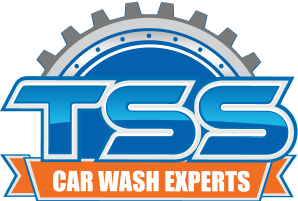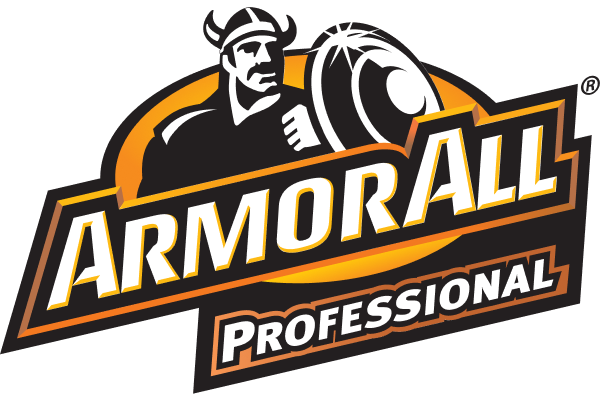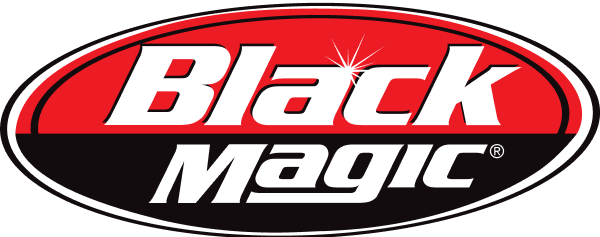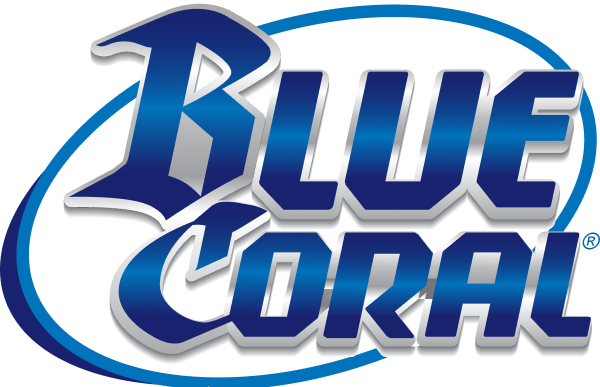
Every operator knows regular car wash tunnel maintenance is critical for success. So why do so many still struggle to stay on top of it? Ask around, and the reasons will vary. Some don’t know where to start. Others don’t think it’s worth the effort. And some think they are doing a good job and just aren’t aware of the gaps in their maintenance plans.
Regardless, these excuses have to go if you want your business to grow and prosper. Regular maintenance will save you money and help prevent accidents. More importantly, a visibly clean, well-maintained facility supports your marketing efforts.
Why Car Wash Tunnel Maintenance Is Crucial for Your Business
Car wash tunnels and the equipment they house are subject to highly corrosive conditions. The high humidity, heat, pressure, traffic, and chemical use will eventually degrade even the most high-quality components without regular maintenance, leading to severe consequences.
For example, poor electrical system maintenance led to catastrophe for this car wash owner. Old, corroded wiring sparked a fire and destroyed the facility. Their revenue stream was frozen for months while expensive repairs took place. Thankfully, no one was hurt.
The same can’t be said for this incident where a faulty brush fell directly onto a vehicle’s windshield. The falling glass cut the 17-year-old driver, severely damaged the vehicle, and led to an insurance claim and potential litigation — not to mention some seriously terrible press.
So pick your reason. Injuries, financial loss, or reputational damage — regular car wash tunnel maintenance is crucial for avoiding all three.
What To Check for in Car Wash Tunnel Maintenance
Checking each part of your tunnel car wash system at appropriate intervals will help prevent disrepair. However, keeping track of what has and hasn’t been checked can be a challenge. Implementing a comprehensive checklist and breaking your tunnel into its key components is the best way to ensure nothing gets missed. If you’re still selecting your equipment, check out our complete car wash equipment list first to determine what checks your operation will need.
Conveyor Belts
Remember to thoroughly examine your car wash conveyor systems both above and below ground. Failure to do so can lead to system malfunctions, such as jammed rollers, and ultimately, a poor customer experience.
The most problem-prone component in most conveyor systems is the chain. You want to have good tension with little to no sag. If necessary, remove links or adjust the tension mechanism to tighten your chain. Examine each link for damage and replace components as needed. Flipping the chain every year or two can help extend its lifespan.
In addition, make sure to keep your conveyor shelf clean from dirt and debris as the sand and dirt will contribute to accelerated wear if the chain is contacted.
Conduct an end-to-end walkthrough of your tunnel to inspect all conveyor belt surfaces. Pay close attention to high contact points, such as guard rails and rollers, as these are subject to additional wear and tear. Finally, if you have an over-under system, you must remove all pit covers to inspect the underground components. Clear out dirt, debris, and excess water at this time.
Brushes
Whether you have mitter curtains, wraparounds, cloth brushes, foam brushes, or all of the above, inspect them frequently. They come into direct contact with vehicles more than any other part of your car wash, making preventative maintenance essential to avoid damaging cars or providing lackluster cleaning.
Look for tear damage during inspection. This can indicate the brush is snagging on something during washings or that there is insufficient lubrication from soap. Also, look for unwanted contaminants on your brushes, such as sand and oil. These can damage vehicles. Remove contaminants completely before resuming operation.
As a rule of thumb, if a brush has more than 30% of material loss, it’s time to replace it. Cost savings tip: on foam brushes with multiple rings of foam brushes, pay close attention to those at the height of the rear bumper, as trailer hitches are a common place where material loss can occur. Make sure nothing is tangled in the brushes.
Conduct regular maintenance checks to ensure your brushes are in good structural condition. This includes checking for erosion and loose brushes, measuring the length of the fingers, and carefully examining the brush cores for corrosion or misalignment. Choosing a core made of durable materials, such as high-quality aluminum, will help reduce the probability of corrosion in the first place.
Nozzles
The most common problem for nozzles is clogging. Watching the water flow during a ghost wash, with no cars present, will reveal distortions in their spray patterns as well as outright blockages. Remove blocked nozzles and clean them. A welding tip cleaner works well for cleaning blocked nozzles.
Check for worn nozzles with worn-down and widened apertures. These nozzles have lost efficiency and are no longer effective at exterior cleaning. Declining pressure in your system and reduced spray pattern coverage can be a sign of worn nozzles.
Finally, keep an eye out for nozzle leaks, which can occur due to corrosion or improper assembly. Inspect leaking nozzles for damage or deteriorated thread tape.
Pumps
What is a tunnel car wash fundamentally good at? Getting things wet, of course. Unfortunately, when it comes to your car wash pumps, this can cause a serious problem. To catch it, change your pump’s oil regularly. Follow the manufacturer’s specifications to determine the appropriate timeline and oil type for changes.
Examine the oil every time you change it. If it has a milky appearance, water is infiltrating the crankcase. Water will reduce the oil’s viscosity and lead to damage over time. To address water infiltration, schedule a service visit to have the pump’s seals examined and replaced, if necessary.
Electrical Systems
First, a safety note. You and your employees should know about lockout/tagout procedures designed to isolate or shut off machines and equipment from their power sources before employees perform any servicing or maintenance work. If this is not already standard procedure, refer to OSHA standards for the correct practices and procedures. Electrical energy sources should always be disconnected and locked out before working in an electrical panel.
Water corrosion is particularly dangerous when it comes to your electrical systems. When moisture is in constant contact with wires it causes corrosion, damaging the insulation and increasing the amount of heat on the lines. In worst-case scenarios like a fire, corrosion can lead to bare wires, sparking, and meltdowns.
Schedule a panel inspection to prevent major catastrophes. The inspector will help you ensure moisture seals are present and functioning and that all wire insulation is sound. They can also recommend and carry out replacements for outdated systems when necessary.
It’s typically recommended to ensure all connections are tightened correctly (use a screwdriver on all terminations for contactors and overloads), but only with power disconnected.
If you aren’t experienced and comfortable with electrical maintenance, be on the safe side and hire a professional
Plumbing and Water Systems
For water flowing in, pipe filters and strainer fittings will help prevent buildup and keep clog-causing particulates out of your sprayers, maintaining a high wash quality. Check filters and strainers daily if you use reclaimed water, or at least weekly if you use fresh water. Clean or replace clogged filters and empty out strainers before reinstallation.
It’s critical to prevent environmental runoff from water flowing out. Promptly remove any debris blocking drain openings. If a drain begins to slow, snaking and hydrojetting are both effective strategies for clearing blockages.
How Often Should You Check Your Car Wash Tunnel?
Quick daily checks of your tunnel and its washing equipment will help you spot and fix the most common problems before they impact your cars per hour or your exterior washing quality. A good approach can be: if it doesn’t look “normal,” it isn’t. Potential issues should not be ignored.
Not every maintenance step outlined in this post can or should be done every day. Undertake more involved procedures weekly, monthly, quarterly, or yearly, depending on the wash systems in question and the traffic at your facility.
Breaking your maintenance checklist into daily tasks, weekly tasks, etc., will help you keep track of everything. Adopt this
How To Perform Your Maintenance Check
Before you start, ensure you have all the necessary equipment for the tasks at hand. This may include safety glasses, gloves, and tools. Disconnect the system you’re working on from the electrical and water lines before beginning repairs. As noted above, always follow lockout/tagout procedures to ensure to machines and equipment are shut off from their power sources before beginning any service or maintenance work.
Visually Inspect for Wear and Tear
Your daily wear and tear inspection should involve an end-to-end walkthrough of your facility. Look for:
- Trash or debris left on the floor
- Bent, dented, or deformed components
- Water leaks
- Air leaks
- Chemical leaks
- Pump leaks or unusual vibrations
- Blocked or distorted water flow
- Rust and corrosion
- Brush and arch misalignments
- Loose or tangled brush components
- Foreign material on brushes
- Missing or obscured signage
- Broken or burned-out lights
- Obstructed pipe filters and strainers
In addition to your daily visual checks, there are a few others you should conduct from time to time. The exact timing depends on the conditions at your facility and manufacturer recommendations. These include the following:
- Examining each link in your conveyor chain for damage or distortion
- Check for chain stretch, which can indicate excess wear
- Removing pit covers, clearing out trash or excess water, and inspecting the underground components of your conveyor system
- Measuring your brushes’ finger length
- Thoroughly inspecting your brush cores for corrosion
- Checking the oil in your pumps for water infiltration
Remember to document any observed issues or executed repairs during these checks. Good record-keeping lets you track patterns and spot potential problems before they derail your business.
Ensure Brushes Are Properly Aligned and Secure
Run a test car through your express tunnel to check your brush alignment. The industry standard is to run one “ghost wash,” with no vehicle present, and one test car at the beginning of each day’s operations.
Observe the brushes as the test car moves through your system. If they don’t make enough contact with the vehicle, realign them for safe and effective operation. Refer to your brush manufacturer and brush type to determine the appropriate alignment. In addition, check the brush for “crush”. The tip speed of the brush is important in how well the brushes will clean. If the brush is pressing too hard on the vehicle, it will visibly slow down.
You should also watch your brushes for any unusual wobbles or shaking. These can be a sign that they aren’t securely attached, which can create serious hazards for the vehicles and people using your facility.
Remove and Clean Nozzles To Prevent Clogs
The bare minimum for nozzle maintenance is to remove and clean them after clogs become apparent. However, preventing clogs in the first place is better for ensuring continuous optimal operation. To do so, simply:
- Rinse nozzles with warm water
- Soak them in warm water and dish soap for 10 to 15 minutes
- Scrub any remaining buildup with a soft brush
- Rinse again
- Dry
Follow this routine monthly to quarterly, depending on the particulate buildup in your facility. Each car wash location will have different water conditions, affecting particulate accumulation rates and requiring different maintenance intervals.
Check for Proper Spray Pattern and Pressure
Watch your nozzles for distortions in their spray patterns during your daily ghost and test car washes. Blocked or reduced sprays indicate clogs. Also watch for reduced coverage, a sign of a worn nozzle tip.
Another sign of worn nozzles is reduced system pressure. Check your pumps daily. If your pump’s gauge shows an otherwise unexplained drop in water pressure, replacing the nozzles is a good first maintenance step to address the problem.
Inspect Pumps for Leaks or Unusual Noise
While checking the pressure on your pumps, you should also watch out for leaks and unusual sounds. Leak indicators may include liquid residue, drops, pooling, or spraying. These indicators are often located near the seams in the housing. Unusual noises can include rattling, buzzing, banging, thumping, or hissing. Sometimes, abnormal vibrations will accompany these noises.
If you detect either of these problems, identify the cause before resuming normal operation. Otherwise, your pump may break or fail during a customer’s visit, leading to a negative experience and potential damage.
Check Control Panels for Error Codes or Malfunctions
Finally, your daily maintenance checks should always include a review of your control panels. If you find any error codes, refer to your product manual for help diagnosing the problem. Remedy what error codes you can in-house and call a technician for the rest. Identify all error codes and malfunctions before deciding if it’s safe to resume operations.
Get Superior Engineering for Every Tunnel
When it comes to car wash tunnel maintenance, you want to start with superior parts, chemicals, and car wash supplies. Regardless of the wash type you’re operating, high-quality components made of durable materials will mean easier maintenance and fewer repairs down the line.
National Carwash Solutions provides you with the best innovations and equipment in the car wash industry. From your core car cleaning supplies and chemicals to high-performing complete tunnel washing systems, we have everything you need to keep your car washing business in perfect running order.
NCS can perform a tunnel inspection and often offer discounts on upgraded or replacement equipment needed when issues arise. Contact NCS here for details.
Partner with North America’s leading car wash provider today! View our selection of car wash tunnel equipment to get started.











